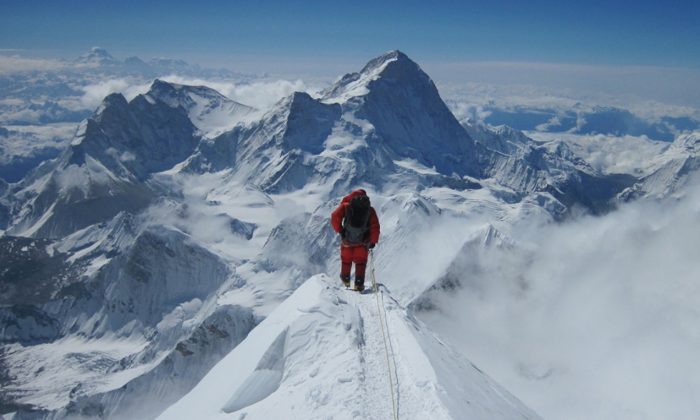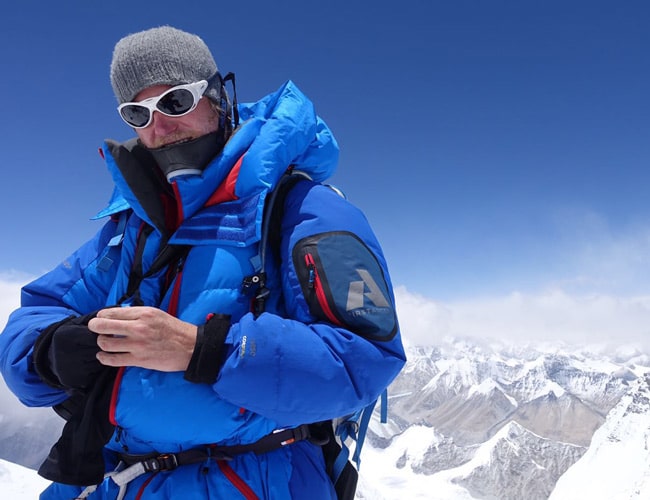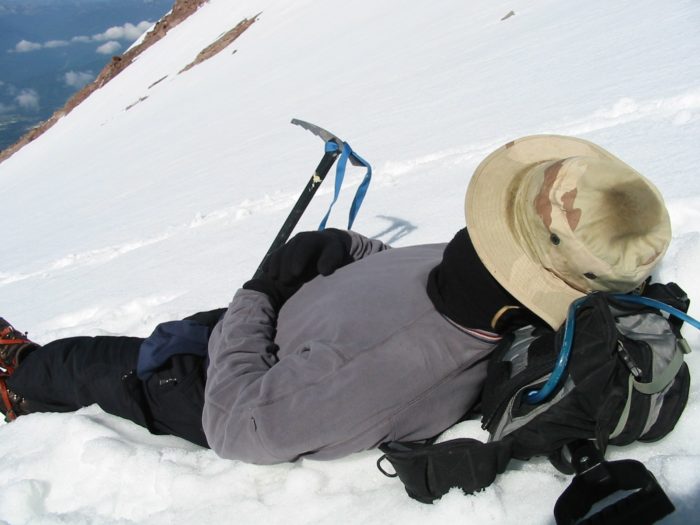
The joys of exploring high altitude environments are many, but the risks are numerous also. Most people can imagine the dangers of falling from an icy ledge or slipping into a glacial crevice; however, the biggest single killer at extreme altitudes is High Altitude Pulmonary Edema (HAPE). When exposed to high altitudes, the lungs can fill with fluids, initially causing shortness of breath, coughing, and blue lips. According to the International HAPE Database: “Fluid has been shown to fill up the air pockets in the lungs preventing oxygen getting into the blood and causing the vicious circle of events that can kill people with HAPE.” As the condition worsens, victims will begin to experience fatigue, cough up a fluid substance from their lungs, experience an elevated heart-rate, and have more difficulty breathing until their lungs stop functioning.
Often lumped together with less fatal forms of Acute Mountain Sickness (AMS) which manifests in many different ways such as headaches, nausea, vomiting, and other flu like symptoms, HAPE is distinctly a condition of fluid in the lungs affecting the respiratory system. Because of its similarity to Pneumonia, it used to be frequently misdiagnosed. HAPE has been known to affect the lungs at altitudes as low as 8,000ft. (2,500m). Another, though not as frequent, counterpart of HAPE is High Altitude Cerebral Edema (HACE), a condition where excess fluids build-up in the Brain. HAPE tends to present itself 1-4 days after reaching high elevations, a delay that often lulls people into a false sense of safety if other related Altitude Sickness symptoms are not present.

HAPE instills fear into even the most seasoned climbers, earning the nickname the ‘silent killer’ for all the experienced mountaineers it has killed. No matter a person’s abilities, HAPE can put the brakes on any high altitude climbing or skiing expedition once the lungs begin to interfere with the body’s ability to survive at extreme altitudes. In these situations, the success of an expedition doesn’t always come down to mountaineering skill, but rather oxygen—or the lack of it. High altitude expedition training will spend considerable time preparing climbers and skiers for the thin air they will encounter at high altitudes and the symptoms of HAPE and other altitude related illnesses.

Experts are unsure why HAPE affects some people more than others. In a widely publicized report of Indian soldiers rapidly transported to above 18,000ft. (5,500m), 15% of them exhibited symptoms of HAPE. That means that 85% were unaffected at this extremely high altitude. The danger increases as the altitude increases; however, even at relatively low altitudes such as ski resorts in Colorado, 1 in every 10,000 people develop signs of HAPE. Being fit and otherwise healthy will not necessarily protect a person from it.
When symptoms of HAPE are observed, the cure is quite simple: get the person down to a lower altitude as soon as possible. If done in time, the body will begin to recover on its own. If transport to a lower elevation is not immediately feasible, administering oxygen and certain oxygen enriching pulmonary medications can keep a victim alive until they can be transported. Like all things, prevention is better than the cure. Slowly acclimatizing to higher elevations is key, along with paying attention to early warning signs.

Humanity has always pushed the limits of where we can go. Mountainous and snowy regions show us the grandeur, but also the risks of the places we travel. We wouldn’t be challenged to go to new heights if it was as easy as a walk in the park. Perhaps this is why reaching some of the highest mountains on earth has become such a coveted prize. The fact that the human body does not perform well above a certain altitude makes the climb harder. And because the climb is harder, the joy is greater when you reach the top. You should be happy in the mountains, but stay on your guard against HAPE.